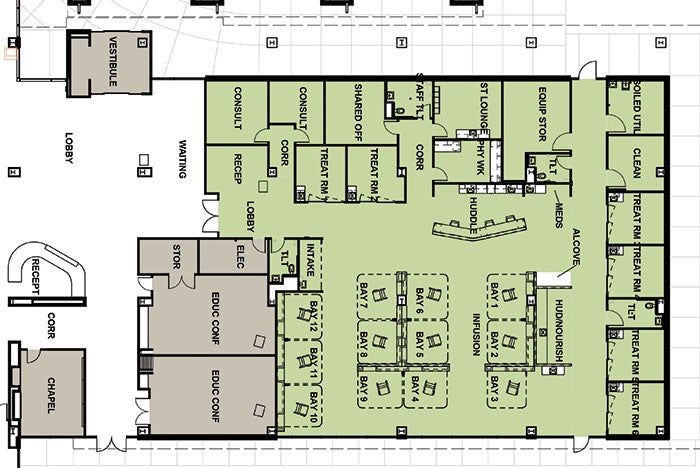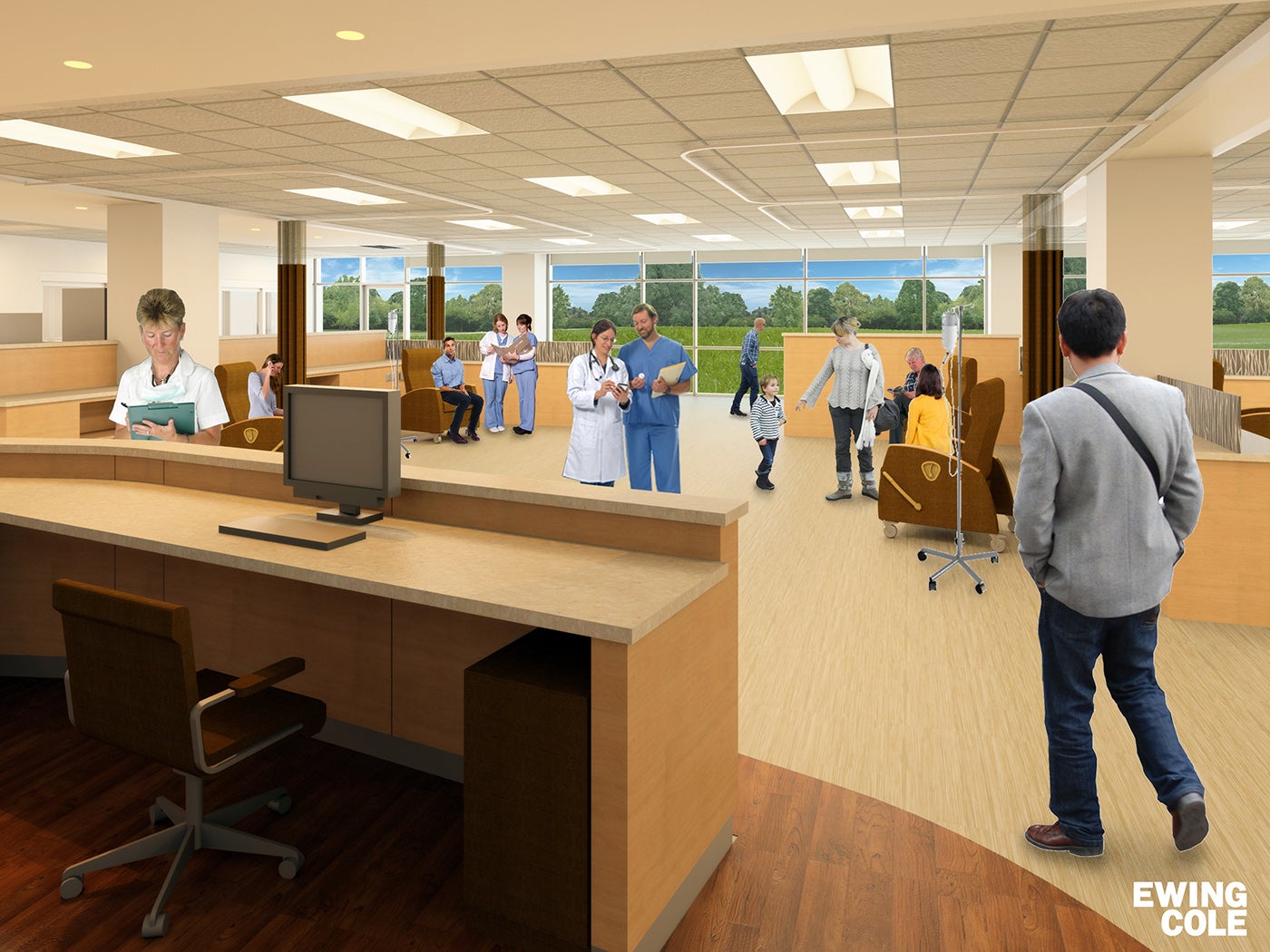Community hospital offers new approach to short stays

The Novant Clemmons Extensivist Clinic includes six private treatment rooms as well as ten open infusion bays for IV hydration or drug therapy.
Novant Health is a North Carolina hospital system exploring innovative ways of servicing patients who often return to the emergency department post-discharge for short-stay observation. These include high-risk patients, low-acuity patients who require close follow-up or IV therapy, perioperative care patients requiring additional observation and palliative care patients.
Novant developed an intensive outpatient care program, or transitional care clinic, that utilizes a physician who concentrates on fewer patients requiring significant clinical management. The physician is often a hospitalist who typically attends more critically ill patients in the hospital and is supported by a multidisciplinary team (i.e., nutritionists and social workers).
Patients may be stabilized in the transitional care clinic prior to being discharged to their homes after an inpatient stay or referred by the hospital after being discharged for follow-up. Patients also can be referred from physician practices and skilled nursing facilities, so that patients will be stabilized there rather than admitted to a hospital.
The Transitional Care Clinic at the Novant Health Clemmons (N.C.) Medical Center is on the first floor of a 96,000-square-foot new addition designed by Ewing Cole. The patient area has large windows that overlook a planned healing garden and includes six private treatment rooms as well as 10 open infusion bays for IV hydration or drug therapy. An average stay lasts about four hours. There are two private consult rooms and an adjacent education/conference room for families.
“Population health studies showed that 4 to 5 percent of chronic patients were generating 45 percent of hospital costs in their region,” says Larry Weems II, M.D., vice president of hospitalist services. “My hope is that hospital-level care can be provided at a better price point in this short-stay setting, creating higher levels of patient satisfaction.”





